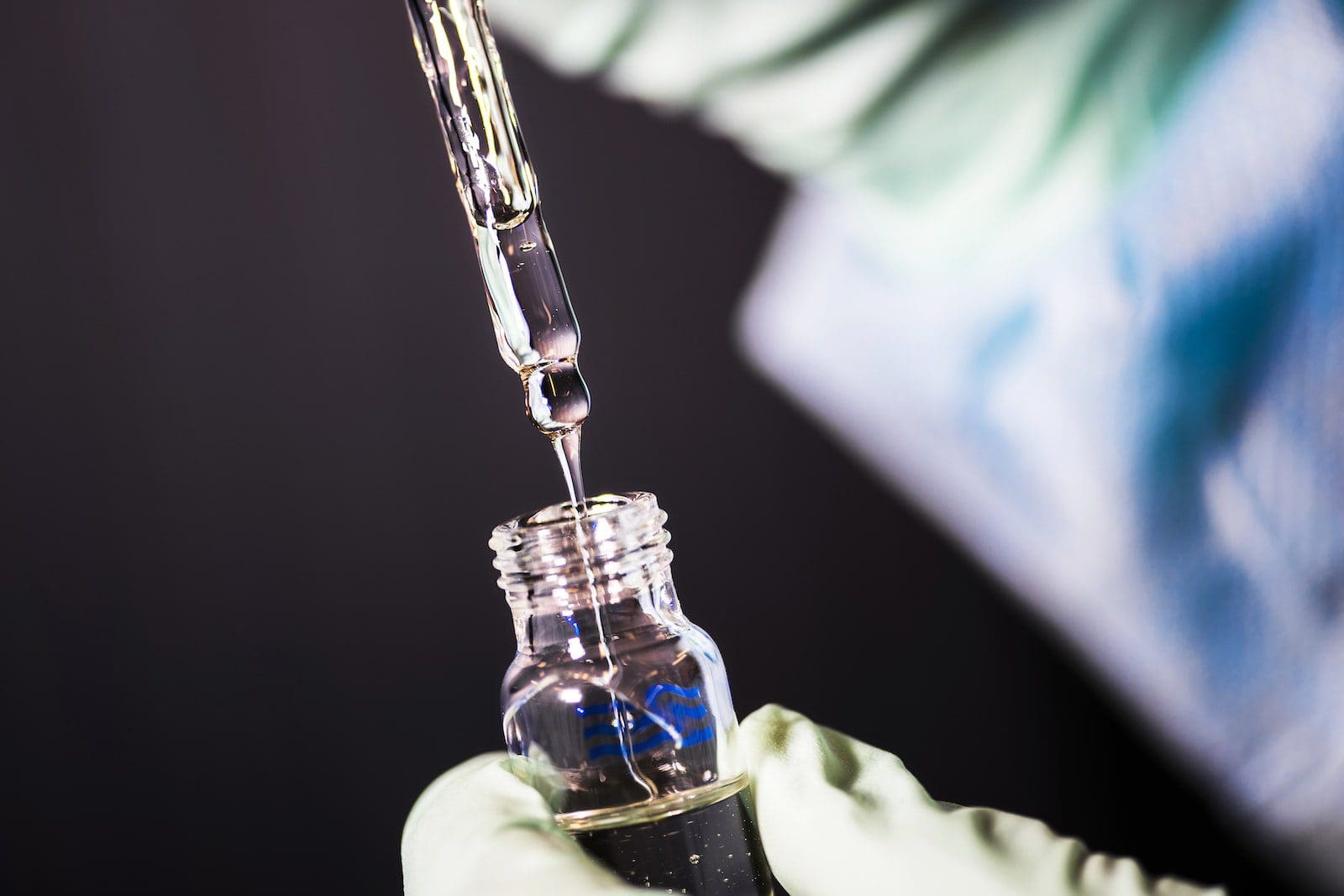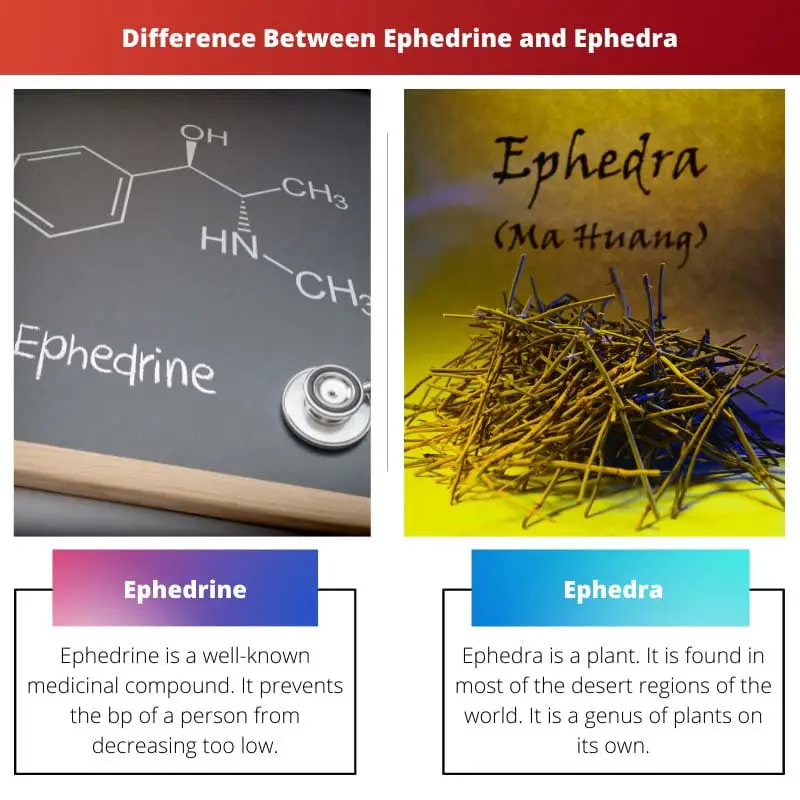With the development of modern medicine, the uses of ephedrine and ephedra have gained importance. They have found applications for various purposes.
Ephedrine finds uses in the field of medicine. It helps regulate the bp of a person from decreasing below the average level and bp also as an anaesthetic.
Key Takeaways
- Ephedrine is a medication used to treat asthma and nasal congestion.
- Ephedra is a plant that contains ephedrine and has been used in traditional medicine for thousands of years.
- While ephedrine is a specific medication, ephedra refers to the plant that contains it.
Ephedrine vs Ephedra
The difference between Ephedrine and Ephedra is that where ephedra is the source, ephedrine is its product. The difference between these two is not many, and both words are even used interchangeably by people. Ephedra as a plant has been discovered much before knowing about its medicinal effects.

Ephedrine is a widely used medicine banned from being used in certain places. It is one that helps to keep the level of bp of a person under control.
Ephedra, on the other hand, is a medicinal plant. It grows throughout the year and has a bush-like structure. In the United States, no supplements containing any part of this plant’s extracted drugs can find uses as medicines.
Comparison Table
| Parameters of Comparison | Ephedrine | Ephedra |
|---|---|---|
| Type | It is a drug or medicine that is widely used. | It is a plant. |
| Relationship | Ephedrine is the product of ephedra. | Ephedra is the source of ephedrine. |
| Uses | It is used as an anesthetic and helps to keep the blood pressure from getting too low. | It helps in the extraction of alkaloids, ephedrine, and pseudoephedrine. |
| Discovery | It was discovered in the 1920s. | It was discovered thousands of years before. |
| Scientific name | Its scientific name is benzene methanol methyl amino ethyl sulfate. | Ephedra equisetina Bge. is it’s scientific name. |
What is Ephedrine?
Ephedrine is a well-known medicinal compound. It prevents the bp of a person from decreasing too low. Also, at times surgeries needed to be performed.
After some time, it used to numb the body. Also, at a point in time, it was to control excessive weight gain and certain neurological disorders.
As its chemical formula, it includes ten parts of carbon combined with 15 parts of Hydrogen and finally one part of nitrogen oxide (C10 H15 NO). And molecular mass is one hundred sixty-five point two hundred thirty-six (165.236) grams per mole.
The most common of them include insomnia, a feeling of anxiety, an increase in the bp of a person, cardiac arrest, angina pectoris, lack of desire to eat food, and even the inability to throw out liquid wastes from the body.
It helps to increase the width of the bronchi, and it increases the air that flows into the lungs. It acts on the sympathetic system of nerves.

What is Ephedra?
Ephedra is a plant. It is found in most of the desert regions of the world. It is a genus of plants on its own.
Also, a tea-like ink from the leaves of these plants was tested. It was drunk by the traditional Americans and the members of the church.
There were various supplements for a diet that used to contain products that came from this plant. However, due to a report on side effects, many countries have banned these.
They found applications in various rituals that were evident in the ancient period. It had its relations with the moon. It believes to help connect the mortals with the gods.

Main Differences Between Ephedrine and Ephedra
- Ephedrine was discovered around the year eighteen hundred and twenty. At the same time, ephedra has been into it for a thousand years.
- The scientific name of ephedrine is benzene methanol methyl amino ethyl sulfate. At the same time, the scientific name of Ephedra is Ephedra equisetina Bge.

- https://www.ncbi.nlm.nih.gov/books/NBK70164/
- https://jamanetwork.com/journals/jama/article-abstract/196247

Ephedrine, being a well-known medicinal compound, has important applications that extend beyond its uses in surgeries.
The chemical properties and uses of ephedrine are intriguing, especially in the context of medicinal applications.
No comment.
The difference between ephedrine and ephedra is quite interesting, where one is the product and the other is the source.
Ephedrine is a medication, whereas ephedra is used for the extraction of specific compounds.
Ephedrine is widely used in medicine, while ephedra provides alkaloids, ephedrine, and pseudoephedrine.
Ephedra, a plant containing ephedrine, has a long history of use in traditional medicine.
Ephedrine is a specific medication, whereas ephedra refers to the plant that contains it.
Yes, ephedra, being the source of ephedrine, is utilized for various therapeutic applications.
The comparison table makes it clear how ephedrine and ephedra differ in terms of type, relationship, uses, discovery, and scientific nomenclature.
The comparison helps in understanding the distinct characteristics of ephedrine and ephedra.
Ephedrine’s discovery in the 1920s contrasts with ephedra’s thousand-year history, which is fascinating.
Ephedrine has gained importance and is widely used for various purposes.
Indeed, ephedrine finds uses in medicine, including the treatment of asthma and nasal congestion.
Ephedra’s historical significance and its applications in various rituals are intriguing aspects of its traditional uses.
The bans on ephedra-containing products highlight the possible risks associated with its side effects.
The cultural associations of ephedra with ancient rituals and beliefs enrich the understanding of its historical importance.
The side effects and uses of ephedrine make for a comprehensive understanding of its medicinal properties.
Yes, the effects of ephedrine on the sympathetic nervous system have significant implications for its medical applications.
The role of ephedrine in widening bronchi and increasing airflow is noteworthy in the context of its medicinal uses.
The scientific nomenclature of ephedrine and ephedra provides valuable insights into their respective identities and origins.
The differences in scientific names of ephedrine and ephedra reveal interesting details about their chemical compositions.
No comment.